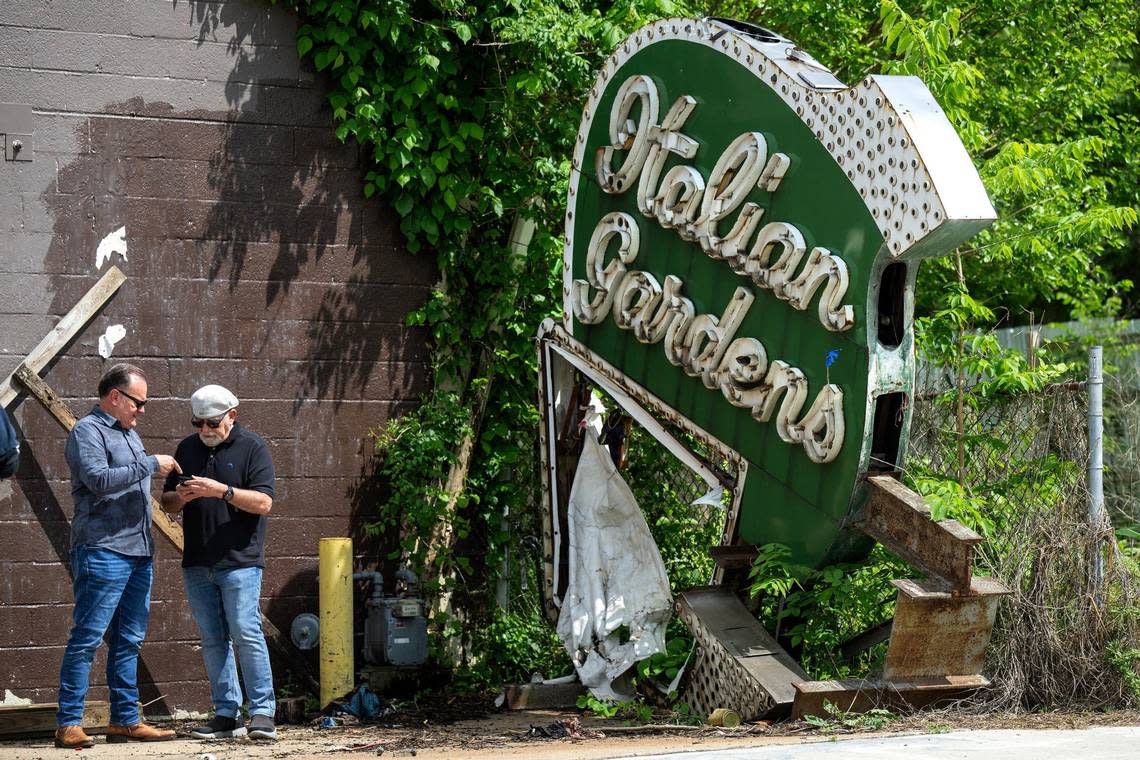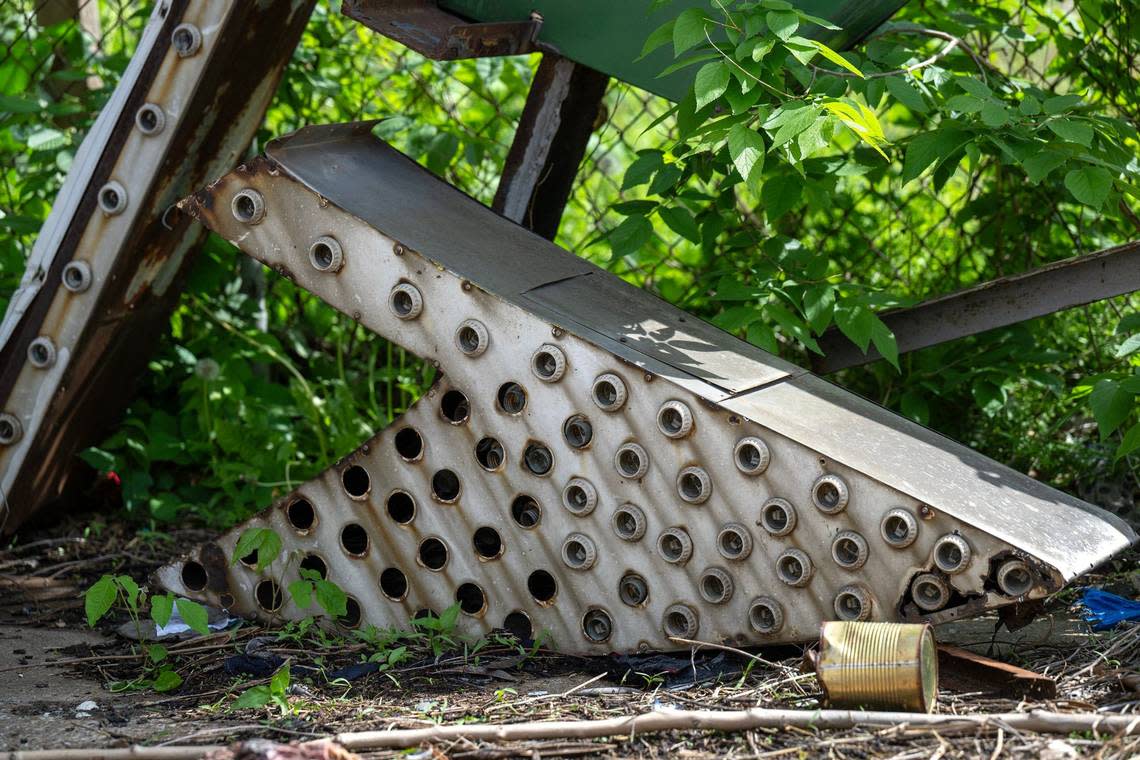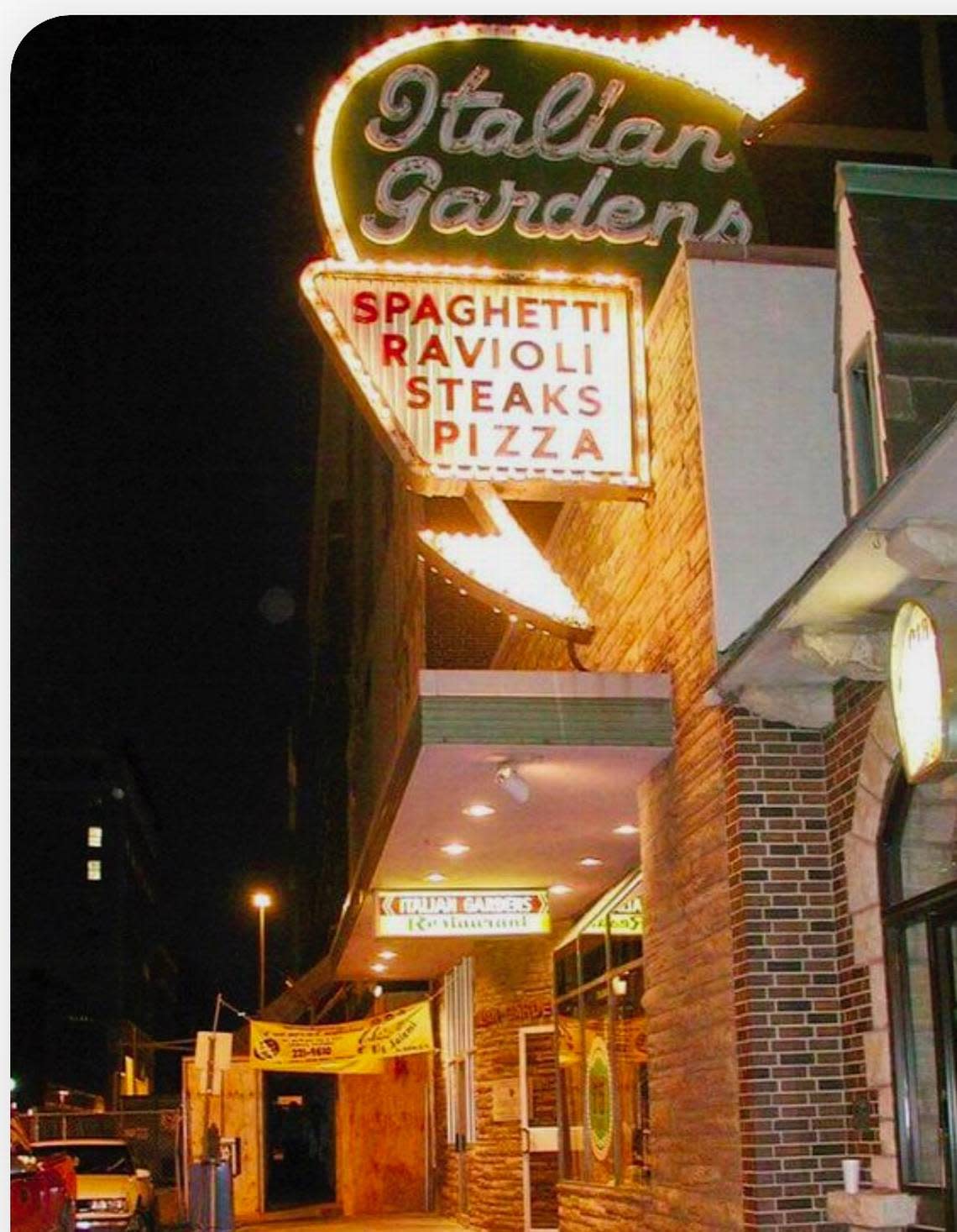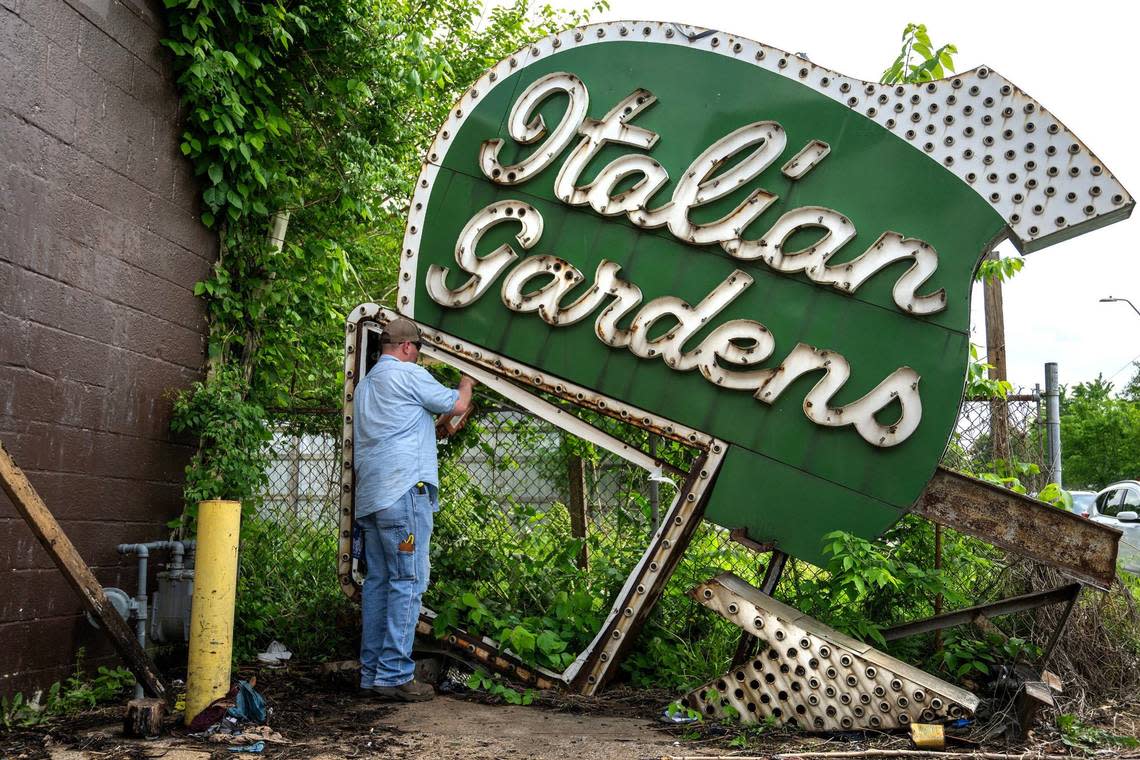A KC institution for 78 years, this restaurant’s ‘Holy Grail’ sign will rise again
Uniquely KC is a Star series exploring what makes Kansas City special. From our award-winning barbecue to rich Midwestern history, we’re exploring why KC is the “Paris of the Plains.”
Lore has it that Joe DiMaggio and Katharine Hepburn ate at the restaurant. So, too, did Frank Sinatra, Liberace and, in its earlier days, famed outlaws Bonnie Parker and Clyde Barrow.
Now Nick Vedros, a noted Kansas City photographer and the creative spirit behind Lumi — a neon sign museum set for the Pennway Point entertainment district still under construction — has its grand, green and white sign in his possession: Italian Gardens.
Johnny Bondon and his nephew, Frank Lipari, opened the restaurant in 1925 at 13th and Walnut streets. Italian Gardens moved to 1110 Baltimore Ave. in 1933 in the depths of the Great Depression, where it would become an institution for the next 70 years, shutting its doors in 2003.
Through the nonprofit Save The KC Neon Inc., Vedros and other volunteers have been amassing a collection of iconic Kansas City neon, using donations to slowly restore them: Winstead’s, Harzfeld’s department store, Stephenson’s Apple Farm Restaurant, the I-70 Drive-In, the 4 Acre Motel, the Capri Motel, Kuluva’s Department Store and dozens of others.
Lumi paid to have a replica sign created from scratch for Katz Drug Store with its bow-tied black cat.
“It’s another Holy Grail sign like the Katz sign was. It’s that important” Vedros said of the Italian Gardens sign, which they believe is from the 1950s.

The Lumi Museum purchased it Wednesday from neon artist Thomas Cobian, 67, who acquired it nine years ago from John DiCapo, the former president of Italian Gardens.
“The whole scenario was that I was supposed to restore it for him,” Cobian said of the 3,000-pound sign. “His vision was to take it and put it on a big trailer and take it to different Price Choppers to sell his different Italian goods.”
That never happened. Restoring a seven-decade-old sign of porcelain enamel, with glowing green argon tubes and some 250 light bulbs, with corroded electronics is no easy task.
“You can’t just put the neon on it. It has to be all redone,” said Cobian, founder in 1988 of Downtown Neon Gallery & Art Studio.
Cobian relocated the sign several times on different properties. It’s been sitting outside his building at 18th Street and Monroe Avenue for the last four years. He put it on eBay. Vedros spotted the sale. The nonprofit’s attorney negotiated a price.
A crane arrived Wednesday to haul the sign away for restoration, a process that can take months. The nonprofit raises money for purchase and restoration.

“I’m very, very pleased,” Cobian said. “There was so much history in this place. You go in there, there were movie star pictures all over. Everyone used to go in there to eat. It’s going to be nice to see it back in place and going again.”
The eventual goal is to light the signs up again in a Neon Alley, part of the six-acre Pennway Point. The restaurant and entertainment district remains under construction west of Union Station alongside the 150-foot Ferris wheel that opened in December.
Vedros had expected to begin lighting up dozens of signs this spring.
“I would just say that we’re planning to have Neon Alley open in the fall — that’s about all we can say right now,” said Vince Bryant of the development firm DaVinci KC, where he is a partner with Dante Passantino and David J. Belfonte. “I think fall we’re kind of planning for the first big restaurant opening. We have a late summer opening for sand volleyball court and a beach bar.”

On Oct. 11, 2000, when Italian Gardens reached its 75th anniversary, then-U.S. Rep. Karen McCarthy, rose to the floor of the House of Representatives and read a tribute to Italian Gardens into the Congressional Record:
“Mr. Speaker, I rise today to pay tribute to a Kansas City, Missouri, family tradition,” McCarthy began, then told the restaurant’s story:
Opening in 1925, then moving in 1933 “with the help of a $1,500 loan from a waitress.” Early days were hard.
“John Bondon and Frank Lipari owned only one new pair of shoes worn by whomever was working with the public in the front of the restaurant,” she said.
She spoke of DiMaggio, Hepburn and Bonnie & Clyde. The restaurant flourished.
“For seventy-five years,” McCarthy said, “the Italian Gardens has been known by businessmen, artists, athletes, and neighbors to be a large community table and gathering place where everyone is made to feel welcome and part of the family.”
At Lumi, Vedros and others feel that’s worth shedding light on.

